Hiking boots’ laces are very helpful. They are useful for protecting your feet on the trail, especially when it comes to lacing techniques for different purposes.
When it comes to hiking boots’ laces, so many things surround them. For example, why are the laces red? How to tie them? Why are they very long? And so much more. However, this article focuses majorly on their length.
We are pretty sure that during some period, you will have been wondering why your laces are so long. And sometimes, tying long laces can be stressful, especially when you are trying to tie a technique like a window lacing, surgeon’s knot, or the like.
At some points, you may feel long laces are unnecessary and you should get the appropriate length, but there are reasons for that. Are they good or bad?
Read through this article to find out. Let’s begin!
Contents
Why Do Hiking Boots Have Long Laces?
Yeah, hiking boots’ long laces are no longer news, and for as long as you have been using the boots, you would’ve been trying them. Except, of course, you change the laces to your length.
Thankfully, you can get new laces for your hiking boots as time goes on, especially when you want to experiment with color fashion. But why do hiking boots have long laces? Hiking boots have long laces for the following reasons:
To cover all shoe sizes
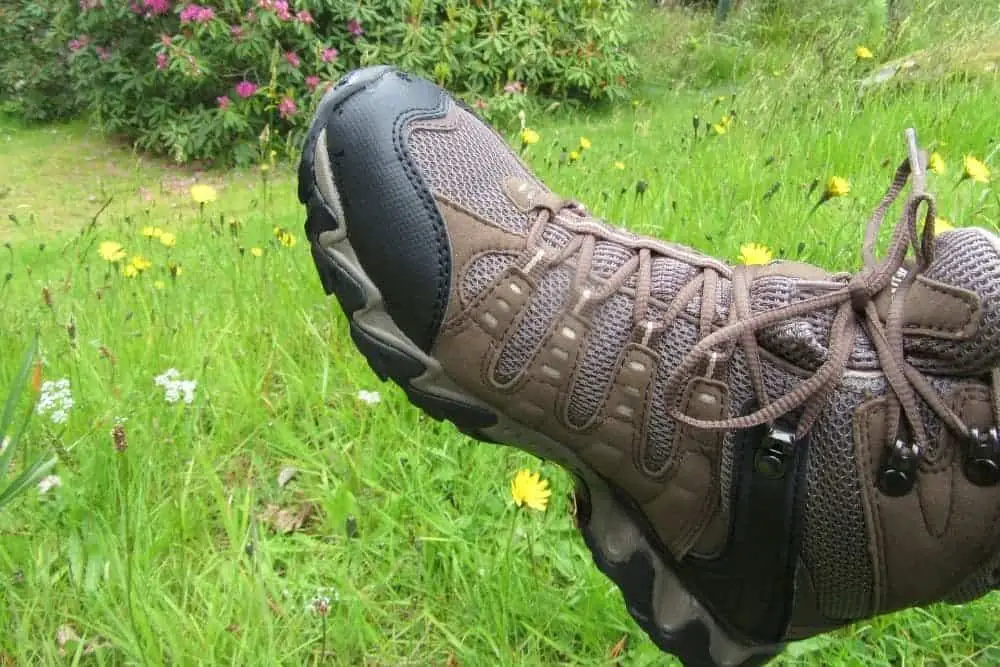
One of the reasons hiking boots’ laces are long is so that they can cover all foot widths and sizes. Hikers’ feet’ width and sizes vary, and manufacturers need to make up for that and ensure that the laces fit all feet.
That way, the laces are not too short or too long for everyone. Therefore, whether your feet are size 7, 20, or 18, you are more likely to use the longest shoelace size available.
It is just easier and better to make the sizes large enough so that everyone is catered for and satisfied. As a result, all hiking boots will be laced up irrespective of the differences in foot width or size.
For different lacing techniques
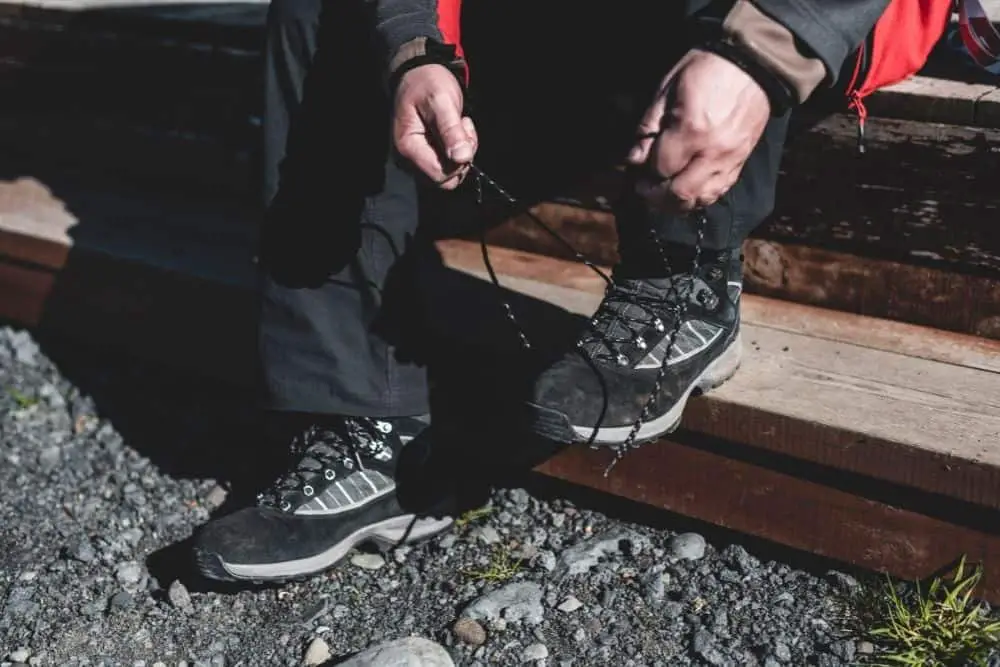
Lace tying when it comes to hiking boots is different from the normal one you are used to. When you wear your regular shoes, sneakers, running shoes, boots, and the rest, you may not see the need to tie them specially.
You may be good with the usual criss-cross method or other common methods. But with hiking boots, the crisscross method may not be sufficient at all times, especially when hiking on different terrains or when you need to relieve your feet of pain.
For example, with long laces, you can tie surgeon’s knots, heel locks, window lacing, and other lacing techniques to prevent blisters, lock heels in place, alleviate pressure on the foot, etc.
For you to tie the different methods, the laces need to be long enough so the ends can go through the laces and be good for tying without coming loose on the trail. Moreover, hiking boots’ designs and sizes differ as well, so the laces should be able to tie the different techniques.
Extremely short laces can make tying hiking boots ineffective. The good benefit of long laces is that it allows you to be creative with tying your shoelaces, not just for fashion, but because they are useful.
When you need to hike downhill, you can change the lacing style to prevent your feet from sliding forward. Likewise, if you need to go uphill or relieve pain, you can switch up the lacing and the lace length will be good enough for that.
To hold boots on
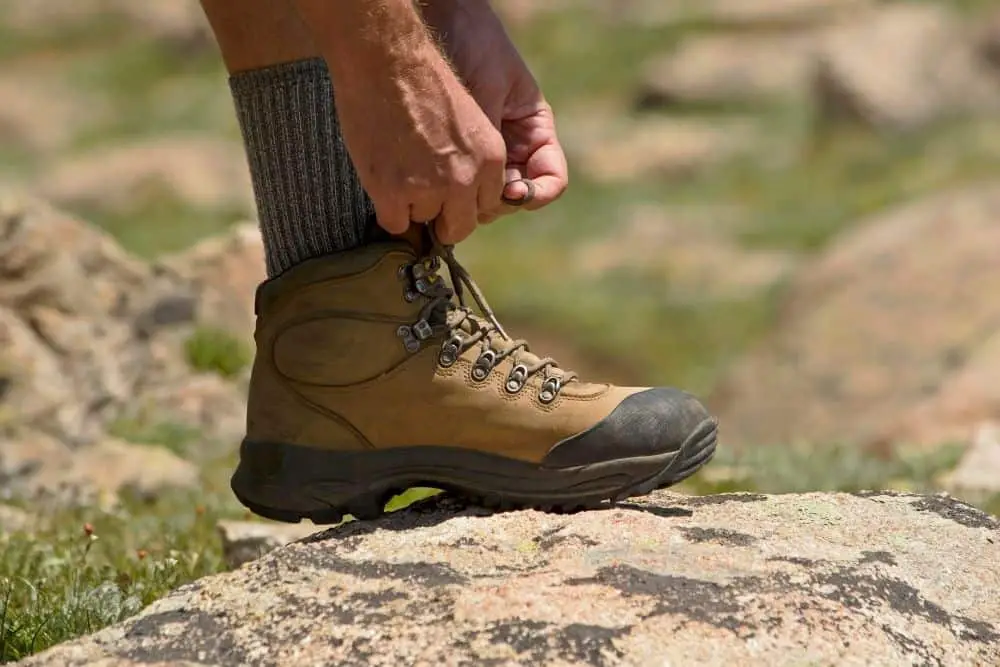
Loose laces can be stressful and frustrating. They don’t hold your feet in place in hiking boots, so boots lack support in that area. They can slow you down and make you stop at intervals to tie and retie them, which is draining.
In addition, short laces may not allow you the freedom to tie your boots and tighten your shoelaces as you should. As a result, it can make you prone to debris or hazards on the trail. For example, it could allow sand or tiny stones into hiking boots.
One of the major causes of loose laces is when they are too short, but, of course, they may not be too short for some other people.
However, when the laces are long enough, you can tighten your hiking boots to the extent you are satisfied with them, so they don’t come loose occasionally.
That way, the laces remain the same way until you decide to switch lacing techniques to accommodate your feet or hiking situation. In addition, to an extent, when laces keep boots on, it helps reduce heel lift to a minimum.
However, it doesn’t totally make up for unfit hiking boots.
Stock length
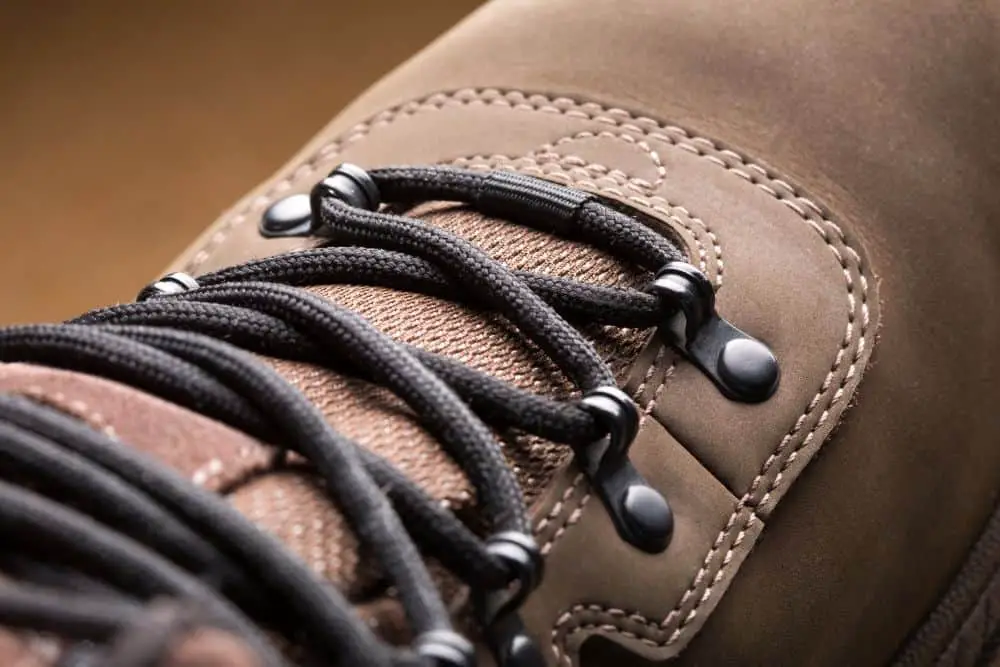
Another reason hiking boots’ laces are long is possibly due to the stock length available. That is, instead of producing laces that fit each boot’s design, size, and length, they use the stock available, usually a longer length, so that it would be long enough for use.
This helps to save production costs. In addition, manufacturers offer stock options with standard length to save on production costs. The standard length covers all boot sizes so that users won’t have to return the boots because the laces were too short to tie.
For durable
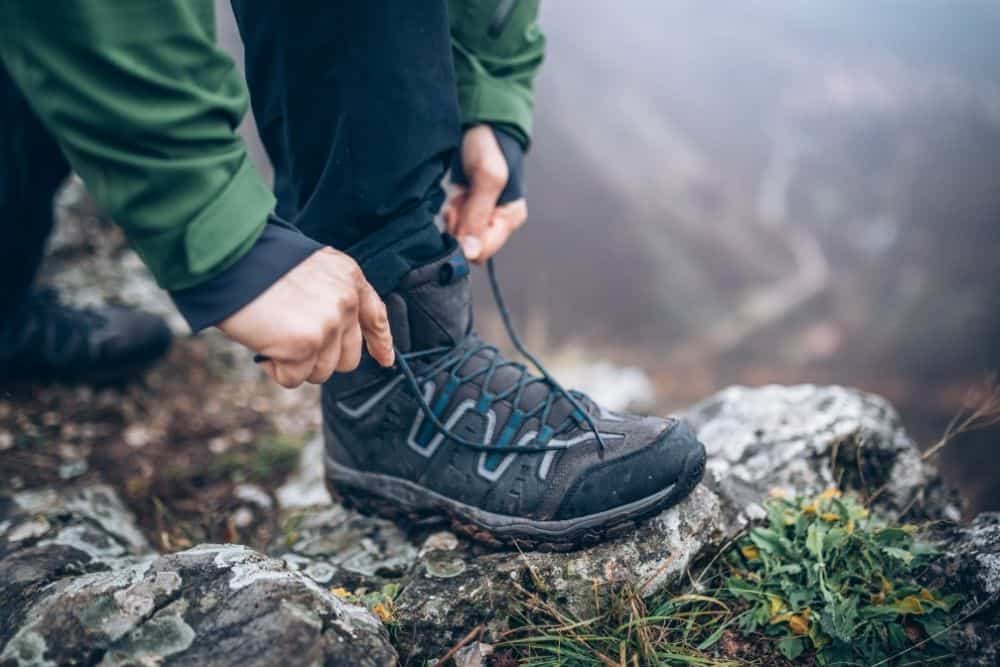
The length of shoelaces contributes one way or the other to their durability. You don’t expect to use short laces for a long period of time, especially when they stress you enough to stay in place for you to be done with your hike.
Considering the possibility of your feet increasing on the trail, they can hardly do much, and long laces are just better. First, you get to use long laces for a longer period of time. Why not?
They are very long, and even if your foot size were to change or swell on the trail or naturally on its own, they would still be useful. You don’t have to strain or drag them to accommodate all the eyelets on the hiking boots and tighten them.
You even save yourself some stress, and since you don’t have to strain them much, they last longer than you think. You can also use them for your other shoes because they are long.
If you decide to change your hiking boots to a bigger size, you can use the laces as long as they still look good and are strong enough.
To protect feet in hiking boots

You may think long hiking boots’ laces are unnecessary, but they are good for protecting your feet on the trail. They are more beneficial than you think.
First, they help to secure your feet in place in hiking boots. For example, if your hiking boots are somewhat bigger than your feet, you can ensure they don’t slip around too much in your boots by tying your laces securely.
On the other hand, short laces might not be enough. As a result, you can reduce friction in hiking boots on the trail and minimize the risk of blisters.
Second, long laces protect your feet from debris. With long laces, you are likely to have excess lace length left, which enables you to tie the finishing knots that secure the top of hiking boots.
When the boots are totally secured, tiny rocks, sand, or other forms of debris cannot get into the boots. This lets you hike comfortably on the trail without worrying. And if the lace ends are still too long, you can tuck them into your hiking boots.
Some Disadvantages of Long Laces
Long laces for hiking boots are good. They help ensure your feet’ protection on the trail, but there can be some disadvantages to their length.
Some of the drawbacks to long laces are:
Can hold dirt
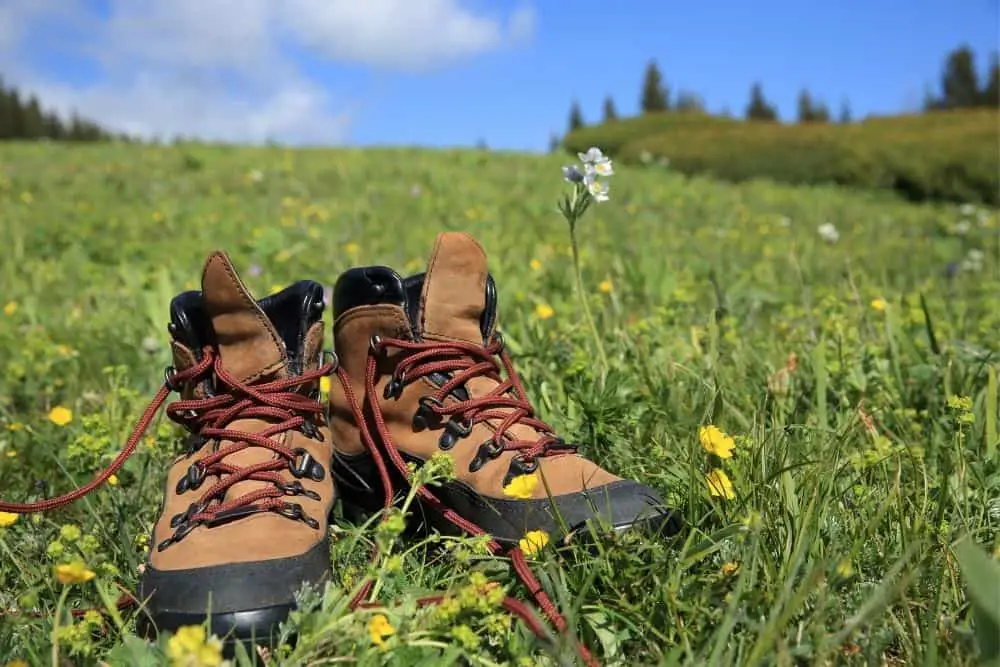
Long laces are lovely, protective, and long-lasting, but that is not all there is to them.They can have their downsides too, and one of them is that they can hold plenty of dirt. How?
When on the trail, they are likely to come loose as you walk. When they do, they drag on the terrain, and you are more likely to step on them. The dirt under your boots and on the floor can hang on to them.
If you are not careful enough, the dirt can stick to your hiking boots, especially when you don’t clean or wash your boots immediately. This dirt can make the laces even more difficult to wash.
Also, the dirt can stick to your hand when you stop to retie the laces or undo them at the end of the day after your hike. However, you can prevent this by ensuring you secure the laces in place and tighten them.
In addition, you need to stop and retie them immediately when you notice they are undone, so you don’t step on them.
Puts hikers at risk
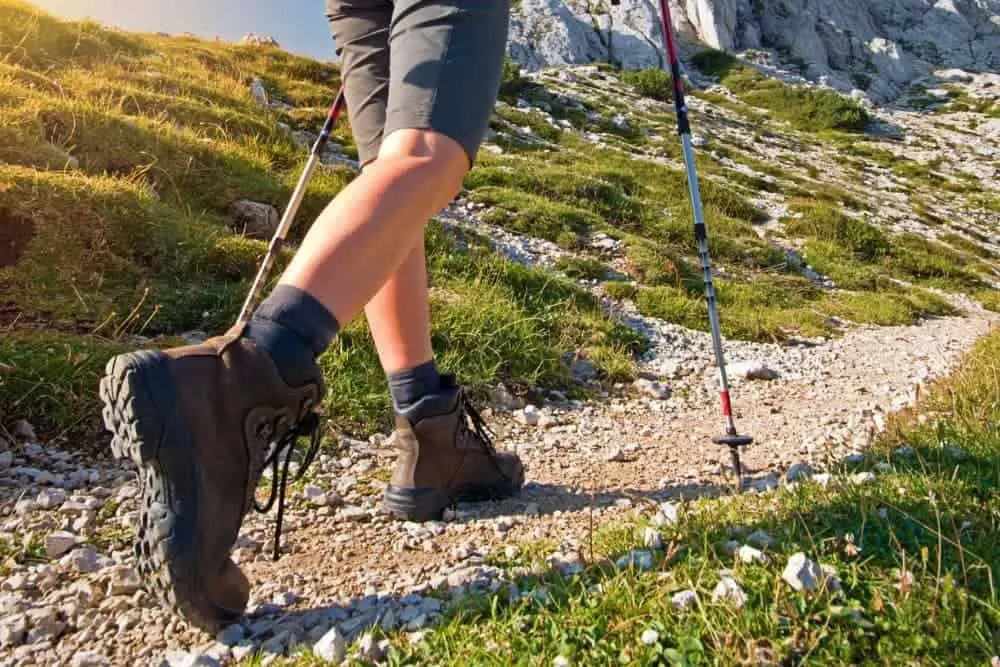
Another disadvantage of long laces is that they put you at risk on the trail. Like we mentioned earlier, long laces are prone to loosening on the trail.
First, they could undo when you don’t tie them properly or due to your foot’s pressure as it moves with every step you take. Second, they could get caught in bushes or twigs that can snag them loose.
When that happens, you can step on them, and as a result, mess up your strides and steps. What happens then? You would probably trip and fall on your face.
What’s worse? You could end up with bruises, twisted ankles, or you could go rolling down the terrain, especially when hiking down a slope. The first thing that may come to your mind is to cut the laces to shorten them, but that messes with their aglets.
And this will make lacing up even more stressful, especially when you want to insert them in punched holes. What you can do is insert the excess into the closest eyelets at the top and make sure to secure the finishing knot so it doesn’t loosen.
Makes tying stressful
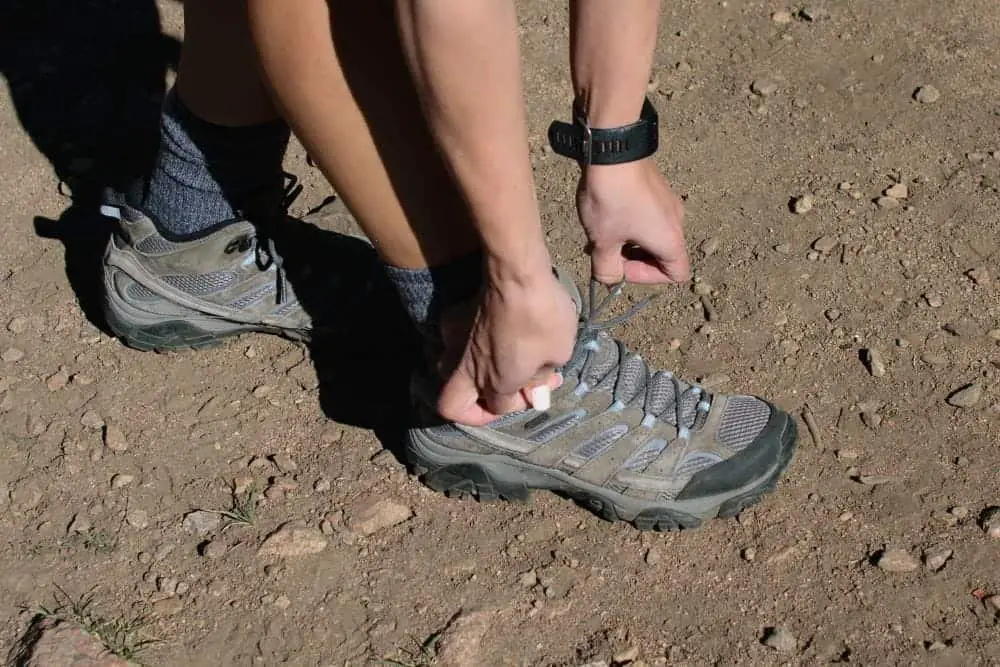
While long laces are beneficial for tying different lacing styles, they can be stressful to do, especially if they are too long. They could make your shoulder hurt a bit from stretching and ensuring that both ends are equal.
For you to get it right, you have to be extra careful and patient. However, in the end, you will like the outcome and the protection it offers.
Conclusion
Hiking boots’ laces are important and are helpful in so many ways. They help to keep feet in place in hiking boots and prevent them from slipping around.
Likewise, they help relieve your feet of pain or discomfort in hiking boots after hiking for a while. However, one thing you should never do is let the laces make up for unfit and loose hiking boots.
With that said, hiking boots have long laces for different reasons, and we have discussed them in the article. Long laces are good for many reasons; they fit every foot’s width and size, are protective, and are versatile.
However, they can be stressful and make hikers more prone to harm on the trail. The solution to long laces isn’t cutting them short or throwing them away.
They are better than that. Instead, you should try to be a little extra careful when tying your laces so they don’t loosen too often on the trail, or you can tuck them in or wrap them around your ankle or sole.
However, if you’ve tried that and there still isn’t any change, you can buy laces that are the exact length you need to replace the manufacturer’s own.

